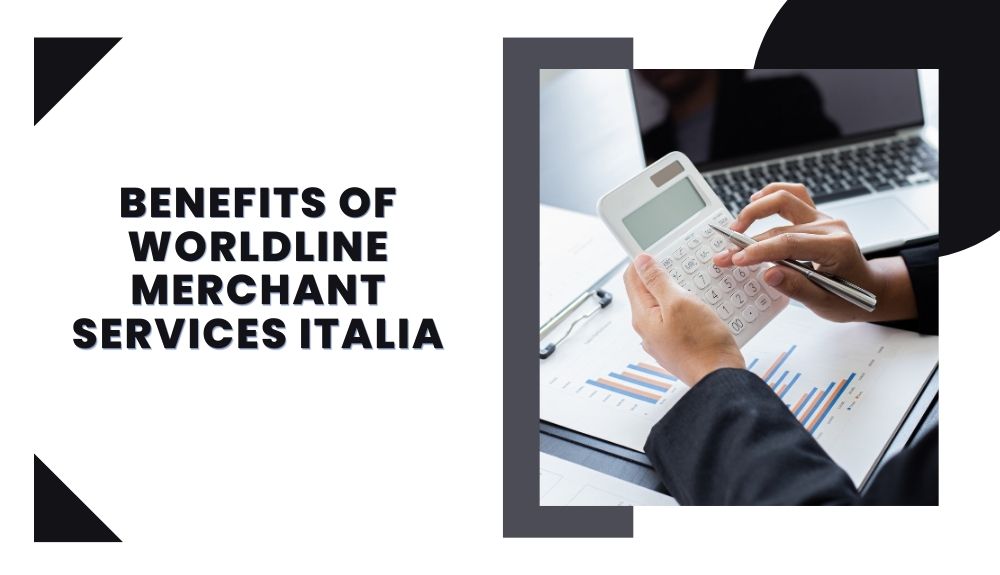How to Help Merchants Fight Fraud in 2023?
In the rapidly evolving landscape of digital commerce, fraud has emerged as a relentless and costly adversary for merchants around the world. The alarming surge in global payments fraud over the past decade has reached unprecedented heights, surpassing $32 billion by 2020.
Join us as we delve into the strategies, technologies, and best practices that can empower and help merchants fight fraud and protect their hard-earned revenues in 2023 and beyond.
Shockingly, this exponential growth shows no signs of slowing down, with the ecommerce sector projected to suffer a mind-boggling $48 billion in fraud losses in 2023 alone. As the digital realm becomes increasingly intertwined with our daily lives, the risk of fraudulent activities continues to loom large. However, in this era of heightened vulnerability, merchants have the opportunity to turn the tide and safeguard their businesses against the ever-expanding repertoire of cyber criminals.
Types of Frauds Merchants Face in 2023

In the dynamic world of digital commerce, merchants encounter a multitude of challenges, with fraud standing out as a persistent and ever-evolving threat. As we delve into 2023, merchants must remain vigilant and well-informed about the types of fraud they may encounter in order to protect their businesses effectively. From payment card fraud and account takeover to identity theft and friendly fraud, understanding the diverse landscape of fraudulent activities is essential. By recognizing these various types of fraud, merchants can proactively implement robust prevention measures and strategies to safeguard their revenues and maintain the trust of their customers.
Payment Card Fraud
Payment card fraud remains a pervasive threat for merchants in 2023. This type of fraud involves the unauthorized use of credit or debit card information, often obtained through data breaches or phishing scams. Fraudsters may use stolen card details to make fraudulent purchases or conduct unauthorized transactions, causing financial losses for both merchants and cardholders.
Account Takeover (ATO) Fraud
Account takeover fraud occurs when fraudsters gain unauthorized access to a customer’s account, typically by exploiting weak passwords, phishing techniques, or data breaches. Once the account is compromised, fraudsters can make fraudulent transactions, change account information, or conduct unauthorized activities, posing significant risks to merchants who may face chargebacks and reputational damage.
Identity Theft
In 2023, identity theft continues to pose a significant threat to merchants. Fraudsters take personal information, like driver’s license details or Social Security Numbers, to impersonate individuals and commit fraudulent activities. Merchants may encounter instances where fraudsters open accounts or make purchases using stolen identities, leading to financial losses and potential legal liabilities.
Friendly Fraud
When a customer makes an authorized purchase but then disputes the transaction with their bank or credit card company, alleging it was unauthorized or fraudulent, this is referred to as friendly fraud, also known as chargeback fraud. This fraud can result from buyer’s remorse, forgetfulness, or intentional abuse of the chargeback process. Friendly fraud can be challenging for merchants to detect and defend against, leading to revenue losses and increased chargeback fees.
Synthetic Identity Fraud
This involves the creation of fictitious identities using a combination of true and fake (fabricated) information. Wrong people use these synthetic identities for opening fraudulent accounts. They can use for getting a new credit card or loans, and make purchases. This fraud can be particularly challenging for merchants. The identities appear legitimate, making it difficult to differentiate between genuine customers and fraudsters.
Phishing and Social Engineering
Phishing and social engineering tactics remain prevalent in 2023. Fraudsters employ deceptive techniques, such as fraudulent emails, phone calls, or text messages, to trick individuals into revealing sensitive information or performing unauthorized actions. Merchants may fall victim to phishing attacks, leading to compromised customer data, financial losses, and damage to their reputation.
As merchants navigate the complex landscape of digital commerce, understanding these various types of fraud is crucial for developing effective fraud prevention strategies. By staying vigilant and implementing robust security measures, merchants can mitigate the risks related to fraud and protect their businesses in 2023.
Best Practices To Help Merchants Fight Fraud in 2023

As the threat of fraud continues to loom large over the digital landscape, merchants must prioritize implementing effective measures to protect their businesses and customers. By adhering to best practices specifically designed to combat fraud, merchants can minimize financial losses, maintain their reputation, and provide a secure environment for online transactions. Here are some essential best practices for merchants to adopt in 2023:
Implement Multi-Factor Authentication (MFA)
Multi-Factor Authentication adds added security by requiring customers to provide multiple forms of verification before accessing their accounts or making transactions. By implementing MFA, like two-factor authentication (2FA) or biometric authentication, merchants can significantly reduce the risk of account takeover fraud and unauthorized access.
Utilize Advanced Fraud Detection Systems
Invest in robust fraud detection systems that employ machine learning algorithms as well as artificial intelligence to analyze transaction patterns, detect anomalies, and identify potential fraudulent activities. These systems can provide real-time alerts, flag suspicious transactions, and help merchants take immediate action to prevent fraudulent charges.
Stay Updated on Industry Regulations and Compliance
Stay informed about the latest industry regulations and compliance requirements related to data security and privacy. Regularly review and update your policies and procedures to align with the evolving legal landscape. By complying with regulations such as the Payment Card Industry Data Security Standard (PCI DSS), merchants can enhance their security posture and reduce the risk of data breaches and fraud.
Educate Staff on Fraud Prevention
Train your staff on fraud prevention best practices, including recognizing and reporting suspicious activities. Ensure they are aware of common fraud indicators and understand the importance of following security protocols. By fostering a culture of vigilance and equipping your employees with the knowledge to identify potential fraud, you create a united front against fraudulent activities.
Employ Address Verification System (AVS) and Card Verification Value (CVV)
Require customers to provide their billing address and the Card Verification Value (CVV) when making online purchases. AVS verifies the address given by the customer matches the one associated with the payment card, while CVV ensures the customer possesses the physical card. Implementing these measures adds an additional layer of authentication, making it more difficult for fraudsters to exploit stolen card details.
Monitor and Analyze Transaction Data
Regularly monitor and analyze transaction data to identify patterns or anomalies that may indicate fraudulent activities. Implement real-time transaction monitoring and employ fraud analytics tools to detect suspicious trends or unusual behaviors. By closely monitoring transactions, merchants can detect and respond to fraud attempts promptly.
Maintain Secure Payment Infrastructure
Ensure your payment infrastructure, including payment gateways and processing systems, is secure and regularly updated. Work with trusted and reputable payment service providers that offer advanced security features. Regularly patch and update software to address any vulnerabilities and maintain compliance with the latest security standards.
Establish Strong Customer Authentication (SCA)
Implement Strong Customer Authentication (SCA) protocols, as required by regulatory bodies like the European Union’s Revised Payment Services Directive (PSD2). SCA involves validating a customer’s identity through multiple factors, such as something the customer knows (password), something the customer possesses (phone), or something the customer is (fingerprint). SCA helps prevent unauthorized access and fraudulent transactions.
Foster Customer Trust and Communication
Build trust with your customers by providing clear communication channels for reporting suspicious activities or fraudulent charges. Establish a responsive customer support system that promptly addresses concerns related to fraud. By fostering open lines of communication, you encourage customers to notify you of any fraudulent incidents, enabling you to take immediate action.
Regularly Assess and Update Security Measures
Fraudsters continually evolve their tactics, so it’s crucial to regularly assess and update your security measures. Stay informed about emerging fraud trends, collaborate with industry peers, and employ the latest technologies and strategies to stay one step ahead of fraudsters.
By implementing these best practices, merchants can significantly enhance their ability to combat fraud in 2023. The proactive adoption of robust security measures, coupled with continuous monitoring and education, will fortify the defenses against fraudulent activities, protecting the business, customers, and overall digital ecosystem. Remember, the fight against fraud is an ongoing battle, and merchants must remain committed to staying informed and adapting their strategies as new threats arise.
How Fraud Prevention Can Help Merchants
Fraud prevention plays a crucial role in helping merchants safeguard their businesses from financial losses, reputational damage, and legal liabilities. Here are some key ways in which fraud prevention measures can assist merchants:
Minimize Financial Losses
By implementing effective fraud prevention strategies, merchants can significantly reduce the financial losses incurred due to fraudulent activities. Fraud prevention systems and technologies help identify and block suspicious transactions, preventing unauthorized charges and mitigating the risk of chargebacks and refunds related to fraudulent transactions.
Protect Reputation
Fraud incidents can damage a merchant’s reputation and erode customer trust. By prioritizing fraud prevention, merchants show their commitment by providing a secure environment for customers to conduct transactions. Proactively protecting customers from fraud builds trust, fosters loyalty, and enhances the merchant’s reputation as a reliable and secure entity in the marketplace.
Strengthen Security Posture
Fraud prevention measures not only protect against immediate fraudulent activities but also strengthen a merchant’s overall security posture. By implementing industry-standard security practices and technologies, merchants can minimize vulnerabilities, protect sensitive customer data, and deter potential fraudsters. This commitment to security helps safeguard the entire business ecosystem and establishes the merchant as a trusted entity.
Compliance with Regulatory Standards
Fraud prevention measures often align with industry regulations and compliance standards, such as the Payment Card Industry Data Security Standard (PCI DSS) and General Data Protection Regulation (GDPR). By implementing these measures, merchants ensure compliance with regulatory requirements, minimizing the risk of penalties, legal actions, and reputational damage associated with non-compliance.
Early Detection and Prevention
Fraud prevention systems equipped with advanced analytics and machine learning capabilities can detect patterns and anomalies in real time. This early detection enables merchants to take swift action, such as blocking suspicious transactions, investigating potential fraud incidents, and notifying affected customers promptly. Early intervention helps minimize the impact of fraud and reduces the likelihood of further fraudulent activities.
Final Words
In the ever-evolving world of digital commerce, fraud prevention has become an indispensable component of a merchant’s operations. By adopting and implementing effective fraud prevention measures, merchants can minimize financial losses, protect their reputation, maintain customer satisfaction, and strengthen their overall security posture. With advanced technologies, real-time monitoring, and proactive strategies, merchants can stay one step ahead of fraudsters and create a secure environment for their customers.
As fraud continues to evolve, it is crucial for merchants to remain vigilant, adapt to emerging trends, and continuously enhance their fraud prevention efforts. By doing so, merchants can navigate the dynamic landscape of digital transactions with confidence, safeguarding their businesses and fostering trust among their customers.
Frequently Asked Questions (FAQs)
Why is fraud prevention important for merchants?
Fraud prevention is crucial for merchants to protect their businesses, customers, and financial well-being. It helps minimize financial losses, maintaining customer trust and satisfaction, comply with regulatory requirements, and safeguard the reputation and integrity of the business.
What are some common fraud prevention techniques?
Common fraud prevention techniques include implementing multi-factor authentication, utilizing advanced fraud detection systems, monitoring transaction data for anomalies, employing address verification and card verification, educating staff on fraud prevention, and staying updated on industry regulations and compliance standards.
How can merchants detect and prevent payment card fraud?
Merchants can detect and prevent payment card fraud by implementing security measures such as AVS and CVV verification, monitoring for suspicious transactions or patterns, using fraud detection systems, maintaining secure payment infrastructure, and staying informed about the latest payment card industry standards and best practices.
What is friendly fraud, and how can merchants address it?
Friendly fraud, also known as chargeback fraud, occurs when a customer disputes a legitimate transaction, claiming it was unauthorized or fraudulent. To address friendly fraud, merchants can maintain thorough transaction records, implement clear refund and return policies, provide excellent customer service, and collaborate with payment processors for investigating and respond to chargeback requests.
How can merchants stay updated on emerging fraud trends?
Merchants can stay updated on emerging fraud trends by participating in industry forums, attending conferences and webinars focused on fraud prevention, subscribing to newsletters and publications from reputable sources, collaborating with industry peers, and partnering with fraud prevention service providers who offer insights and updates on the latest fraud techniques.











